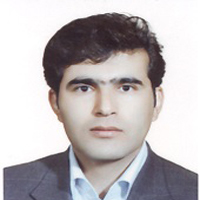A Study of Archaeological Finds of Tape Jamalo in Chaharmahal and Bakhtiari; Based on Systematic Survey and Arena Determination
After the construction of the Zayanderud dam in central Iran, a total number of five villages, i.e., Yancheshmeh, Abadchi, Murah or Baba Aghdaghan, Jamalo, and Ghaleh Raeis, along the Zayanderud River were displaced and some sites like Jamalo, Ashna, and Koganak also went underwater. Reducing rainfalls and droughts over the past ?? years have accordingly caused the decline of water in the reservoir of Zayanderud dam and the size of the lake is decreasing year by year. The event also led to the emergence of the Jamalo site from the water. Due to the limitations of archaeological studies in ????, as well as the special condition of the site due to the richness and expansion of evidence (Neolithic to Islamic period), and the probability of falling underwater again, the arena and the proposed privacy to the site towards the mid of ???? have been thus far determined. The systematic survey and arena determination of the site and its surroundings was performed. The present study was carried out by descriptive-analytical method and a combination of library and field studies. Therefore, the main objective of this paper was to provide an overview of the settlement status of the site and presenting a relative chronology based on surface findings. The survey and excavation teams also covered ??? ??×?? m squares for systematic sampling, and recorded the digging of ?? trenches, measuring ?×? m. Based on the excavated trenches the area of the site was determined of ???? square meters. Based on the surface findings, it seems that Tape Jamalo was first occupied in the first half of the sixth millennium BC, after the invention of pottery. The site then continued to be dominated for much of the sixth and fifth millennium B.C., until the beginning of the Early Bronze Age. In the Middle Bronze Age, it had been also dominated by the Porto-literate, historic, and Islamic period. Some pottery shreds on the surface were similar to those of the Khuzestan and Fars regions, and the central and western Iranian Plateau.
-
The Petrographic Analysis of Coarse Black Ware of the Parthian Period, Explored in the North of the Persian Gulf (Qeshm Island)
Hadis Kojouri *, Alireza Khosrowzadeh, Mahmood Heydarian
Iranian Archaeological Research Journal, -
An Ethno-Archeology Approach to the Use of Horns in ILAM Buildings and Bakhtiari Mafeh-Gah Architecture
Majid Sarikhani *, Amin Babadi Akasheh, Majmood Heydarian
Research paper on Bakhtiariology and Iranian peoples,


